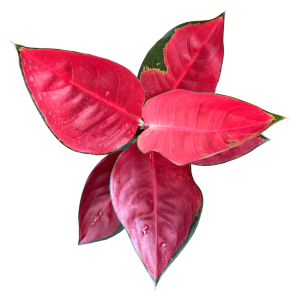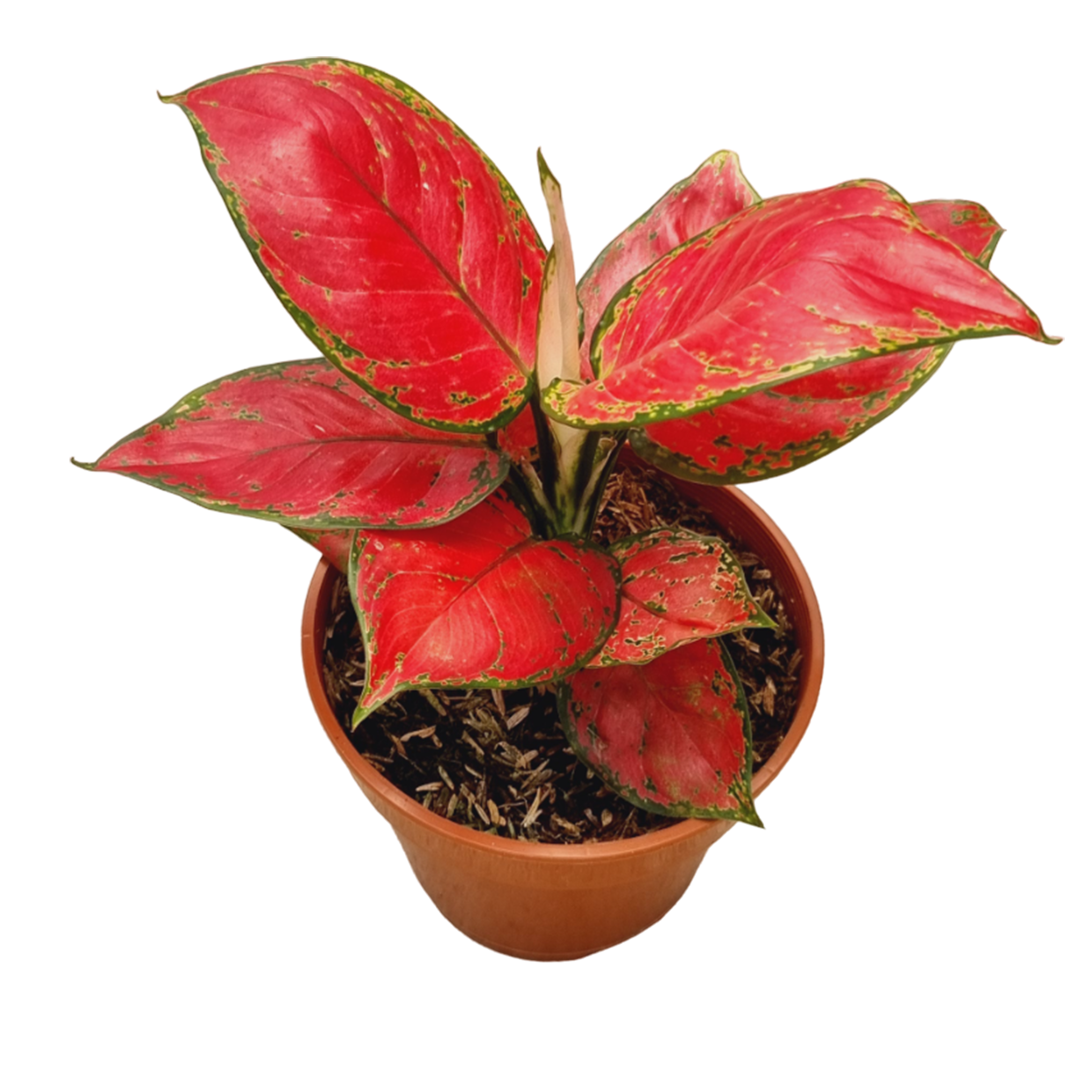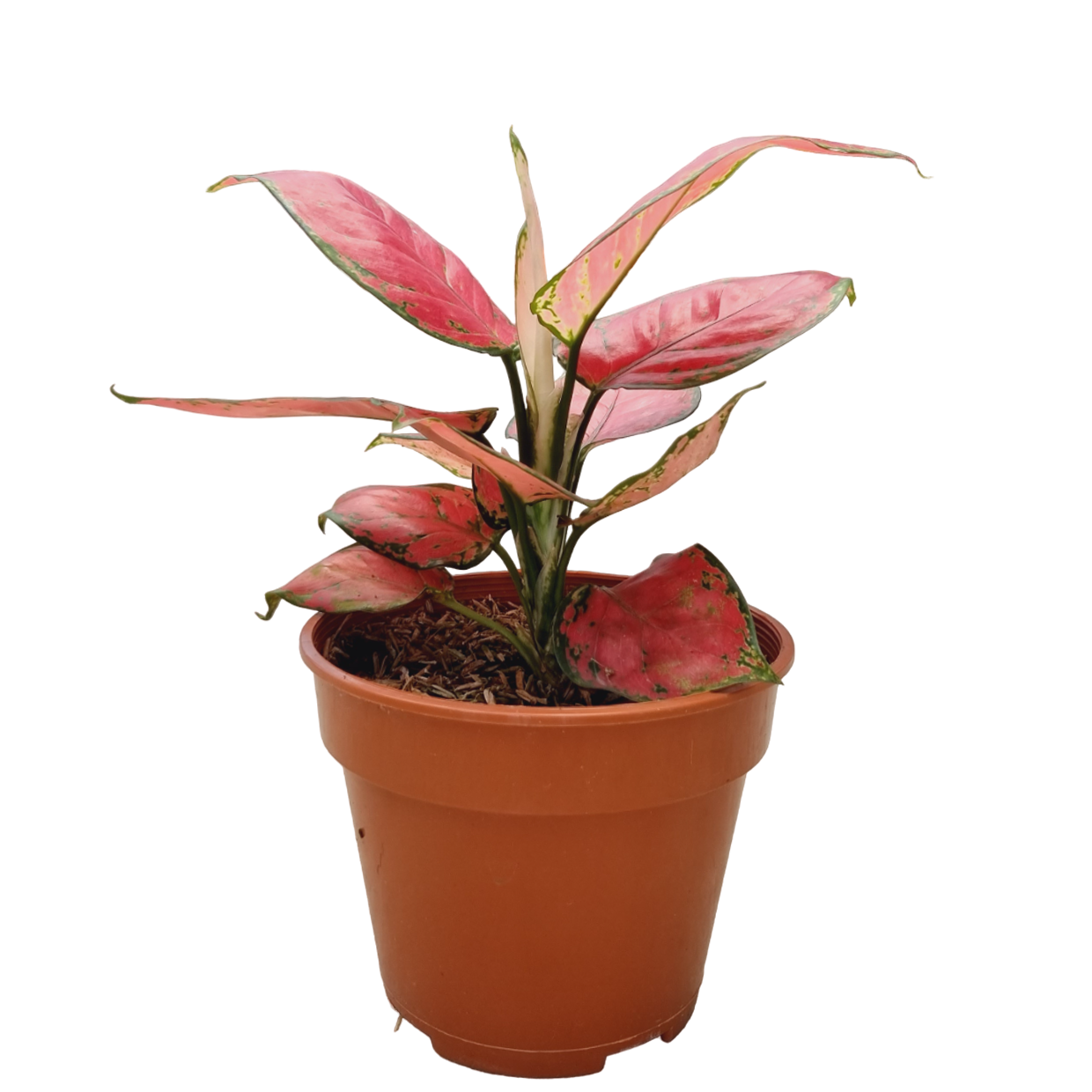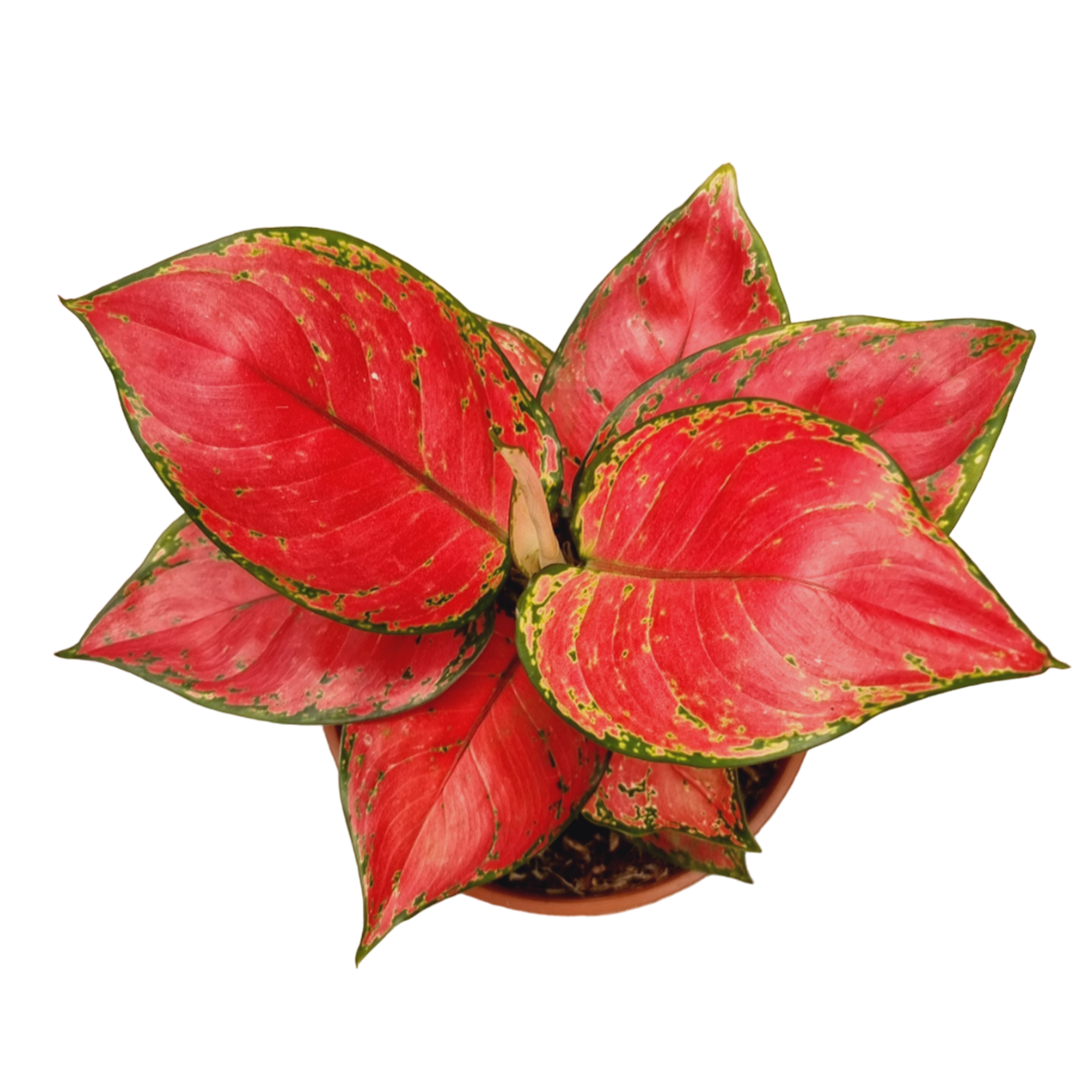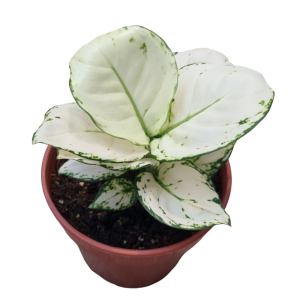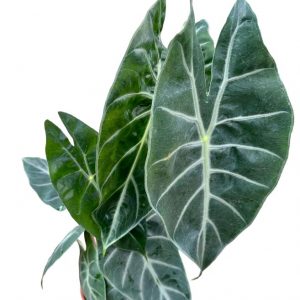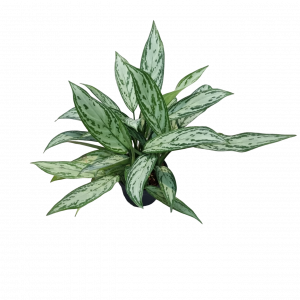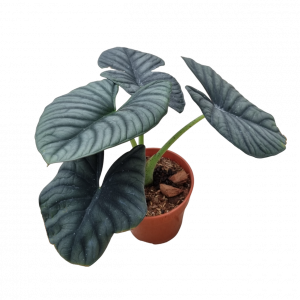Aglaonema ‘Red Beauty’, commonly known as Chinese Beauty, is a striking ornamental plant belonging to the Araceae family. Native to Southeast Asia, this variety of Aglaonema is renowned for its vibrant, multicoloured foliage. The large, lance-shaped leaves are a beautiful blend of green, red, and silver, making it a standout feature in any indoor or shaded garden space. The plant typically reaches a height of 30–50 cm, with its colourful leaves adding an elegant touch to both modern and traditional interiors. Known for its ease of care and air-purifying properties, Aglaonema ‘Red Beauty’ is a popular choice among plant enthusiasts and interior decorators alike.
Plant Care Guide:
Light: Aglaonema ‘Red Beauty’ thrives in moderate to low light conditions, making it ideal for areas with indirect sunlight.
Water: This plant prefers evenly moist soil but is sensitive to overwatering. Water Aglaonema ‘Red Beauty’ when the top few centimetres of the soil feel dry to the touch.
Soil: Aglaonema ‘Red Beauty’ thrives in well-draining, lightweight potting soil. A standard houseplant potting mix enriched with organic matter works well, though adding perlite or sand can help improve drainage.
Fertilising: To keep Aglaonema ‘Red Beauty’ healthy and vibrant, fertilise regularly with a balanced, water-soluble fertiliser. A general-purpose fertiliser will provide essential nutrients, but a fertiliser higher in potassium can encourage more colourful foliage.
Common Pests: While relatively pest-resistant, Aglaonema ‘Red Beauty’ can occasionally attract common indoor pests such as aphids, spider mites, or mealybugs. If you notice discoloured, distorted, or stippled leaves, inspect the plant closely for pests. Treat any infestations promptly with insecticidal soap, neem oil, or by wiping the leaves with a damp cloth. Leaf spot diseases and fungal issues may occur if the plant is kept in overly humid, stagnant conditions, so ensure good air circulation around the plant.
General Care: Aglaonema ‘Red Beauty’ is a low-maintenance, resilient plant that thrives in well-lit, humidity-rich environments. It is an ideal addition to indoor spaces where it can provide a burst of colour and improve air quality. Regularly remove dead or yellowing leaves to maintain its tidy appearance.
Lighting: Bright Filtered Light
Watering: Water Moderately
Watering Frequency: When top layer of soil is dry
Wilting: Wilting is a common plant problem that occurs when a plant’s leaves, stems, or flowers become limp and droopy. This is usually caused by a lack of water, thus becoming unable to support the weight of the plant’s leaves and stems. However, wilting can also be caused by other factors such as overwatering, root damage, pests or diseases, lack of nutrition, or exposure to extreme temperatures. It’s important to identify the cause of wilting and take appropriate action..
Spider mites: These pests can cause leaves to appear stippled or yellowed, and the plant may lose its leaves. Spider mites thrive in dry conditions, so increasing humidity levels and regularly misting the plant can help prevent them..
NATURALGRO Super Soilless Aroid Mix.
Powercote NPK 15+15+15+TE (450g): Every 3 Months.

